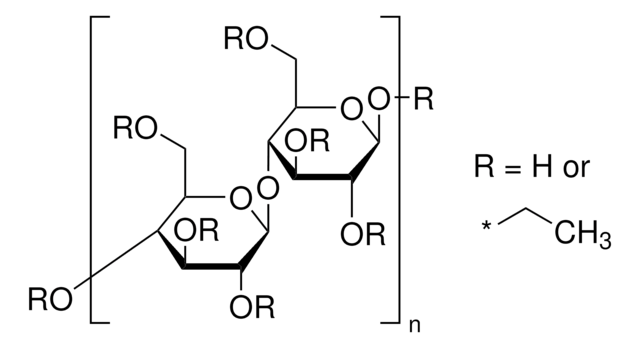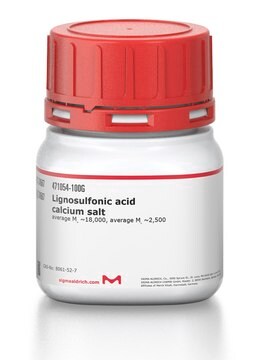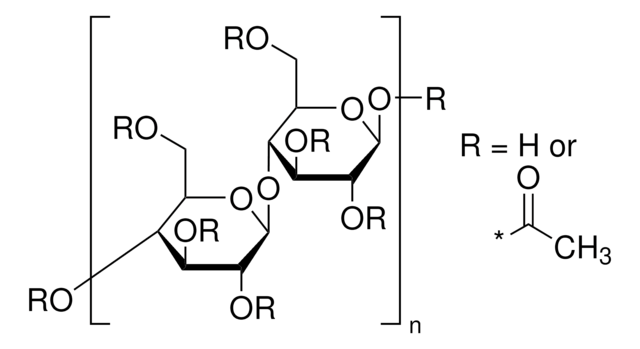200697
Éthyl cellulose
viscosity 22 cP, 5 % in toluene/ethanol 80:20(lit.), extent of labeling: 48% ethoxyl
Synonyme(s) :
Ethylcellulose
About This Item
Produits recommandés
Forme
powder
Température d'inflammation spontanée
698 °F
Concentration
47.5-49.5%
Ampleur du marquage
48% ethoxyl
Indice de réfraction
n20/D 1.47 (lit.)
Viscosité
22 cP, 5 % in toluene/ethanol 80:20(lit.)
Température de transition
softening point 155 °C
Densité
1.14 g/mL at 25 °C (lit.)
Vous recherchez des produits similaires ? Visite Guide de comparaison des produits
Catégories apparentées
Description générale
Application
- To prepare oleogels for the ophthalmic delivery of hydrophilic drugs.
- As a coating agent to synthesize flexible bioplastics for packaging applications.
- To prepare CuO/Cu2O granules for thermochemical heat storage applications.
Code de la classe de stockage
11 - Combustible Solids
Classe de danger pour l'eau (WGK)
WGK 1
Point d'éclair (°F)
Not applicable
Point d'éclair (°C)
Not applicable
Équipement de protection individuelle
Eyeshields, Gloves, type N95 (US)
Certificats d'analyse (COA)
Recherchez un Certificats d'analyse (COA) en saisissant le numéro de lot du produit. Les numéros de lot figurent sur l'étiquette du produit après les mots "Lot" ou "Batch".
Déjà en possession de ce produit ?
Retrouvez la documentation relative aux produits que vous avez récemment achetés dans la Bibliothèque de documents.
Les clients ont également consulté
Notre équipe de scientifiques dispose d'une expérience dans tous les secteurs de la recherche, notamment en sciences de la vie, science des matériaux, synthèse chimique, chromatographie, analyse et dans de nombreux autres domaines..
Contacter notre Service technique










